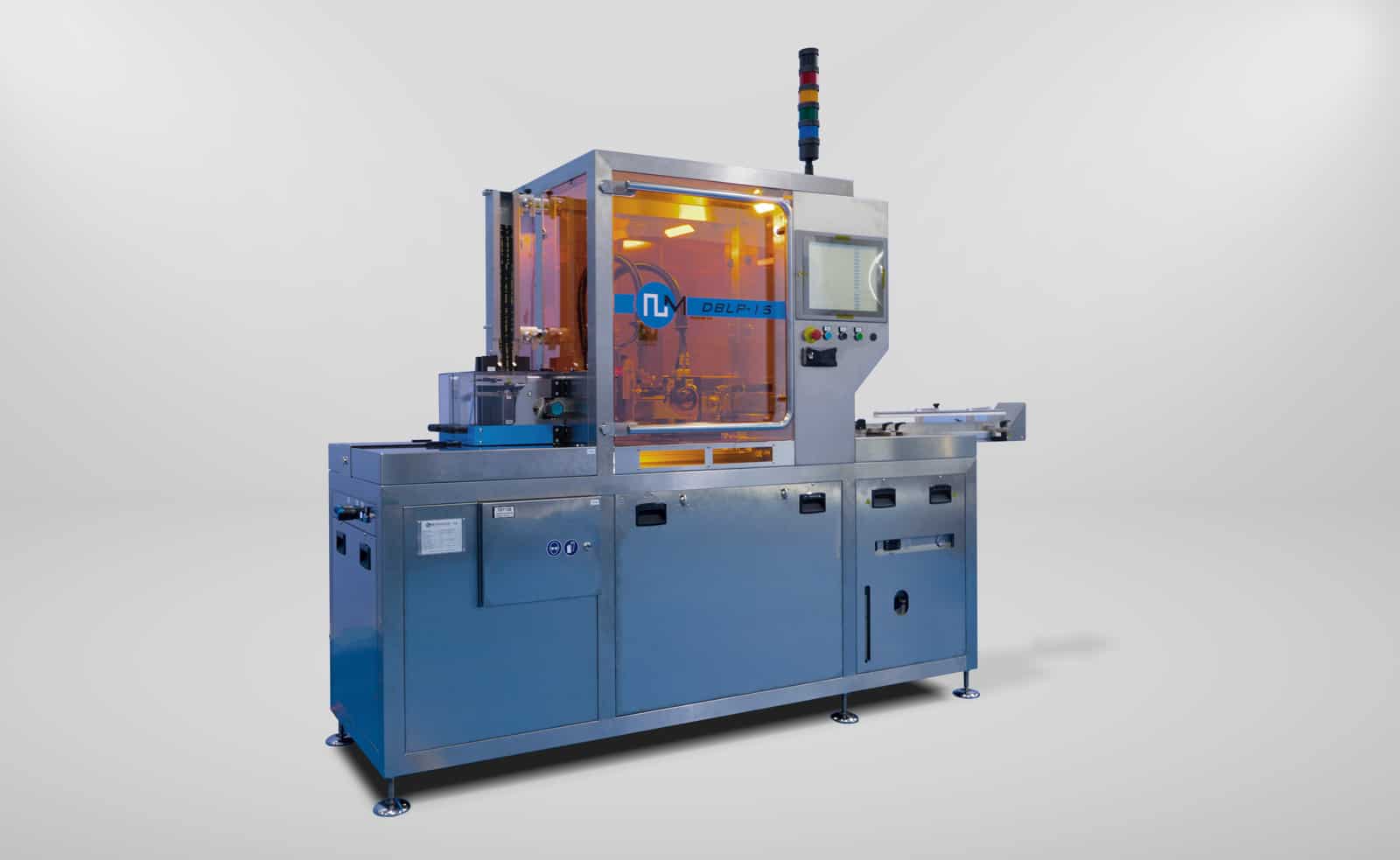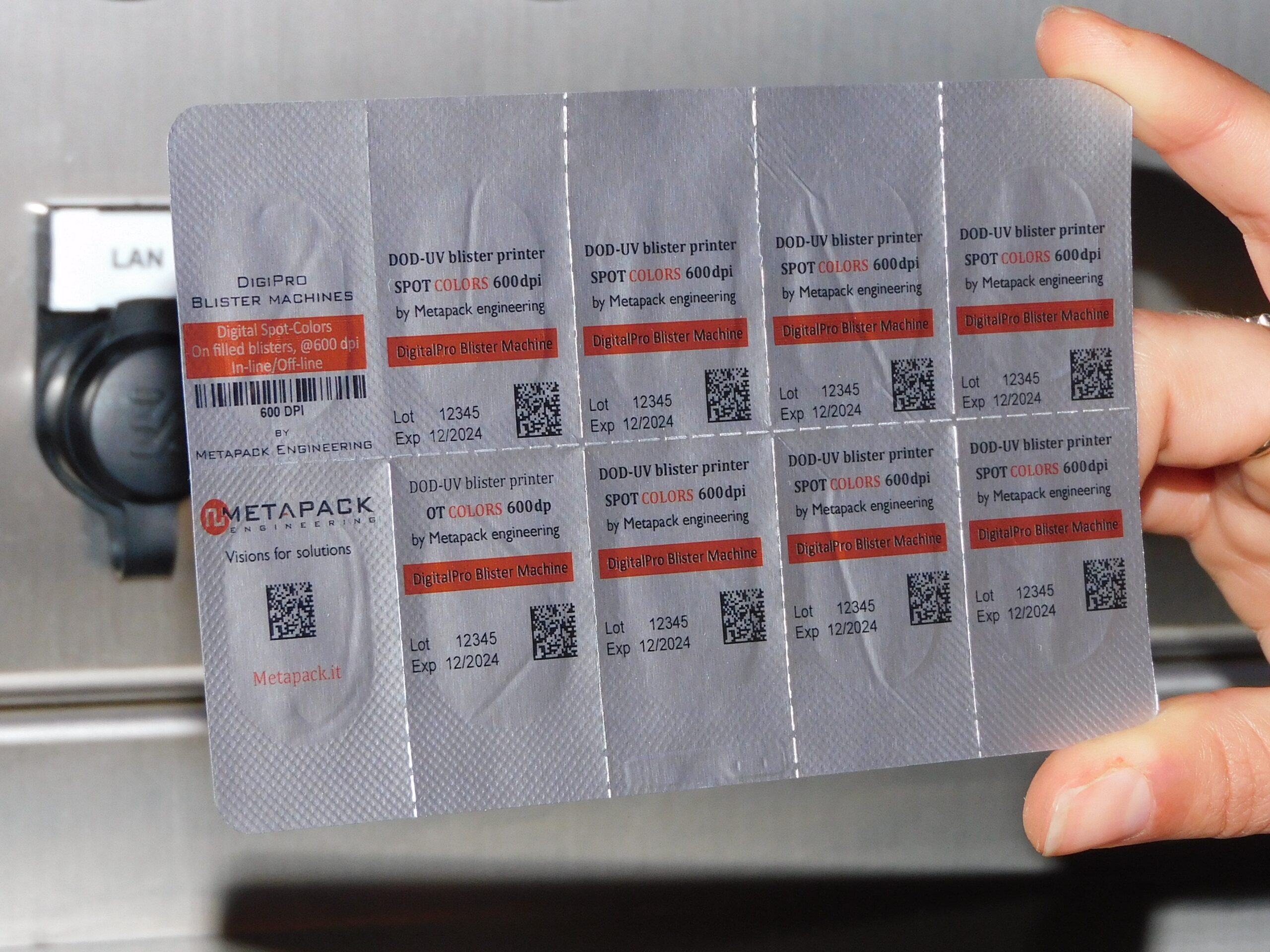Metapack produces Digital Blister Printer (DBLP) for in-line and off-line Blister Printing and Inspecting.
Digital Blister Printer range of machines have been conceived and realised for processing filled and sealed blisters, by printing on the full aluminium surface of each single blister, with no belts limiting the available printing area. The system allows to print the sealed blister surface with SPOT COLORS DOD-UV printing system, 600 DPI, BLACK and RED ink.
The printing process relies on the industry-proven DOD-UV digital printing system, widely used in many sectors for digital high-quality printing. Digital Blister Printers (DBLP) machines can be equipped with one or more printing heads, each one providing one single colour print and with print width of 54 or 108 mm. The final curing is provided by the UV lamp which activates the ink polymerisation (curing) in a fraction of a second, i.e. immediately compared to the travel speed.
Digital Blister Printer DBLP-15
CONFIGURED WITH SPOT-COLORS DOD-UV, BLACK AND RED INK
The machine works with blisters feeder magazine, adjustable in size, releasing the blister on a transport system that is based on a single shuttle for transporting the blister, kept flat, under the print head and then under the curing lamp.The printed blister is picked up and deposed on the discharge conveying system. After the each printing process, the blister is picked up and the shuttle travels back again.







